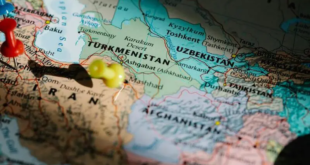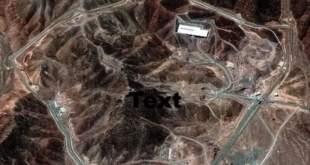 TEHRAN (FNA)- A powerful earthquake jolted southern Iran on Wednesday, killing six people, and damaging scores of homes on a resort island in strategic Persian Gulf waters.
TEHRAN (FNA)- A powerful earthquake jolted southern Iran on Wednesday, killing six people, and damaging scores of homes on a resort island in strategic Persian Gulf waters.
The Seismological Network of the Geophysics Institute of Tehran University said the 6-magnitude quake hit at 1100 GMT about 53 kilometers (33 miles) southwest of the port of Bandar Abbas, which is home to an oil refinery and the country’s main naval base.
“Six were killed and 46 were injured,” Mehdi Irannejad, the governor of Qeshm island, where the earthquake occurred said.
In another natural disaster to hit the country, at least 16 people have drowned in torrential rains and floods that lashed western and southern parts of Iran.
Wednesday’s quake occurred on Qeshm, a popular tourist and free-trade island which lies just off the Persian Gulf coast from Bandar Abbas in the Strait of Hormuz, the strategic oil route between Iran, and Oman and the United Arab Emirates.
“More than 100 houses in Qeshm villages have been damaged between 30 percent and 50 percent,” a local official on the island, Gholam Ali Daneshvar, was quoted as saying by IRNA.
The tremor lasted about 30 seconds but was followed by at least 10 aftershocks, the most powerful measuring 4.8 on the Richter Scale.
“Despite its greatness and shaking a large area, the tremor subsided fast and did not cause much damage as its epicenter was far from densely-populated areas,” Mehdi Zare, who heads Iran’s Earthquake Forecast Centre told the Iranian students news agency.
Zare added that further aftershocks were likely to occur in Hormozgan province in coming days.
Yaser Hazbavi, the provincial head of the national disasters office, told television there were power cuts in some parts of the island, which is more than twice the size of neighboring Bahrain and is home to about 100,000 people.
The tremor was felt in Bandar Abbas, capital of Hormozgan province, and further afield. Local officials told FNA that some buildings were destroyed.
The quake was also felt across the Persian Gulf in Dubai, particularly in the city state’s many skyscrapers. The Dubai International Financial Centre and parts of Dubai Internet City and Dubai Media City were evacuated as a precaution.
Iran sits astride several major faults in the earth’s crust, and is prone to frequent earthquakes, many of which have been devastating.
The worst in recent times hit Bam in southeastern Kerman province in December 2003, killing 31,000 people — about a quarter of its population — and destroying the city’s ancient mud-built citadel.
The deadliest quake in the country was in June 1990 and measured 7.7 on the Richter scale. About 37,000 people were killed and more than 100,000 injured in the northwestern provinces of Gilan and Zanjan. It devastated 27 towns and about 1,870 villages.
Tehran alone sits on two major fault lines, and the capital’s 12 million residents fear a major quake.
The last deadly quake in Iran was in March 2006 when at least 66 people were killed and almost 1,000 injured in the western province of Lorestan near the border with Iraq, although there have been a number of moderate quakes which have left many injured.
The Strait of Hormuz is a vital conduit through which an estimated 40 percent of the world’s crude passes.
Iran is the OPEC oil cartel’s second-biggest producer, pumping more than four million barrels per day of crude.
Qeshm island is part of Iran’s free-trade zone, boasting an international airport and natural attractions including a salt hill and a marine forest, but also has some mining operations including salt and iron ore.
 Eurasia Press & News
Eurasia Press & News

